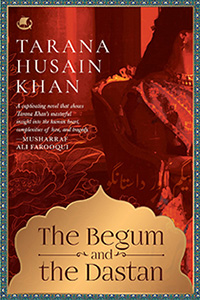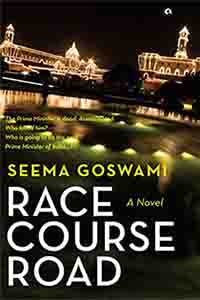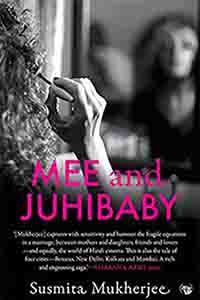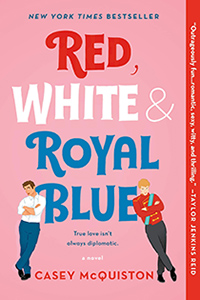“Despite the glitz and the glamour, Khan’s take on history remains unflinching.”
NO MAJOR SPOILERS
This is a novel of parallels, three stories bracketing each other trying to add meaning to the main story which has all the elements of a historical pot-boiler. The beautiful blue eyed Feroza Begum insists on going to view the monsoon celebrations at the Nawab of Sherpur’s palace despite being told that newly married and recently pregnant women just do not do these things – especially since the Nawab has a bad name where women are concerned. Feroza is spoilt and obstinate and insists that she will get away with it. However Fate throws her in the Nawab’s path in a state of rain wet dishevelment straight out of a Hindi film – though in this case a ghazal would be more appropriate -and there is no escape.
Despite the glitz and the glamour, Khan’s take on history remains unflinching. She chronicles a life of abuse, conspiracy and murder where women are taken advantage of and married or unmarried according to the whims of royalty.

Feroza does not however attempt to stab the Nawab with her diamond nose pin but gradually begins to get used to him, even mildly fall in love with him and enjoys lording it over the other Begums since she is, after all, a creature of her time and fairy tale princesses can be taken in by glamour. Despite being a monster the Nawab is also cultured and has a deft hand with romantic poetry using it to woo his rebellious Firoza.
Feroza’s story is set against that of her great grand daughter Ameera who is being told the big bad Begum’s story by her Dadi. In Ameera’s time the Pathan Rohillas have come down in the world and even the Nawab’s statue has disappeared while Ameera’s father cannot afford to pay his children’s school fees. Ameera and her besties and boyfriends rather disrupt the immersive atmosphere that Khan has created. In an atmosphere that dazzles with diamonds and diwana, school fee defaulting falls flat – though perhaps it does drive home the Ozymandias theme since it is quite obvious that pomp and power do not last and that new ways of thought will always drive out the old.
The third story is that of the storyteller, the Dastan Mirza Kallan who has an allegorical tale to parallel Feroza’s kidnapping. The tale of Ameer Hamza and the disappearance of his beautiful fairy wife who falls into the clutches of a powerful, lecherous magician is punctuated by magic sparks and shots of afeem since Mirza Kallan needs shots to get into the mood. He also marries Feroza Begum’s maid Tabu and has added inspiration for his stories since his new wife gives him an earful on the Nawab’s abusive behaviour towards women.
What these disruptions do is take away from the fascinating world of reality that Khan has fictionalised. The story of the Nawab and his rebellious begum and a vanished world of tawaifs are ingredients that continue to fascinate especially after Muzaffar Jung brought Umrao Jaan onscreen and opened up her world.
Khan spends time skimming on the surface of her characters since she has a lot of ground to cover and perhaps too many characters to juggle as she tells her almost fairy story of a blue eyed princess. The story is real – she has taken history and fictionalised it adding her own ornamentation. Most readers would prefer to read the unadulterated history of Firoza Begum rather than taking side trips into the present and down allegorical bylanes which despite opening up the world of the vanishing dastangois – another endangered performing art, as doomed as that of the world of the tawaifs though for different reasons – add nothing to an interesting and rather tragic piece of court history.
She has recollections of being told this story by her grandmother and the book is the result of following the thread of the story down the pathways of history.
Reviewed by:
Anjana Basu
Added 16th December 2021




